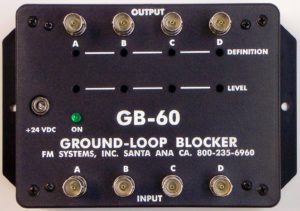My camera doesn’t work well after a weather storm.
WHAT YOU CAN DO ABOUT LIGHTNING STRIKESHOW TO PREVENT DAMAGE TO CCTV COMPONENTS
Protecting a CCTV system and it components from lightning damage does not use the same methods used to protect human life from electrical shock. In fact many of the techniques used to protect humans from lightning also cause some other problems in the CCTV system.
First of all, nothing can prevent a direct lightning strike. The result is usually a smoking melted down blob of carbon and metal. However, if the lightning strike is somewhat off center or just nearby, then there is a chance for electronic equipment to survive, provided certain precautions have been taken to protect the electronic components from over-voltage and over-current. These two things cause electronic equipment to fail.
If you read up on the subject the first thing you learn from the various books on the subject of lightning protection is that you need to “GROUND EVERYTHING”. This process creates as many paths to ground as possible to bleed off current from the strike and keep the destructive voltage from rising to high. From a human protection point of view this is good solid advice, but from the CCTV equipment point of view this is very hard on the equipment and can reduce the lifespan of the equipment to the first occurrence of a lighting storm.
The “Ground Everything” advice is designed to protect people from electric shock and should be followed wherever possible. But what you must do to protect equipment from damage is very different. Lighting Protection in the form of diode and gas tube lighting suppressors need to be installed at one end and maybe both ends of any long cable run. The long cable runs are more prone to voltage build ups due to local lightning static discharges.
When lightning strikes from cloud to cloud or from the upper atmosphere to the ground, a differential charge appears on the ground. Since the charge is not equal at all points on the ground, this differential change will cause current the flow down any conductor connected to both grounds. This current flow can be thousands of amperes occurring for only milliseconds, but in that short amount of time the current causes a sharp rise in the voltage that can reach thousands of volts. Your CCTV equipment is not designed to withstand that kind of voltage at the video input and output terminals, so the equipment gets permanently damaged.
For safety sake you should install lightning protection on your video cables but be sure to BOND EVERY LIGHTNING PROTECTION DEVICE with the LEAST POSSIBLE INDUCTANCE TO MINIMISE THE AMOUNT OF VOLTAGE THAT WILL BE DEVELOPED BETWEEN THEM WHEN THE LIGHTNING DOES STRIKE. Even a few inches of #l6 wire is enough to generate up to 300 volts or more at the video input frying the video system when lightning strikes, (not because of the resistance of the wire but because of the inductance of the wire connecting the lightning protection unit to the ground).
A lightning strike is a very short duration event, and so the signal it creates has very high frequency content, this is why the inductance of the connecting wires, not the resistance determines the effectiveness of the lightning protection device. Even a very small inductance on the order of one or more nano-Henrys is capable of generating very high voltages between the video equipment and the lightning protection devices during a lightning discharge. The ground wires on the lightning protection devices should be as short as possible. Do not add extra wire to the ground wire to extend the connection, instead route the video cable over to the lightning protection device mounted as close to the ground as you can so that the ground path for the current will be as short as possible.
There is one more thing to consider when using lightning protection. Lightning protection requires a good ground to function. That ground can induce ground loop artifacts into your video signal. Now that you have protected your video equipment with the lightning arrestors, you may discover that you now have a ground loop in your video image. This ground loop is created by the normal ground at the DVR or Monitor and the new ground applied by the lightning arrestors. This will look like black or translucent bars on the video image. These bars can stand still or move slowly up the screen. When the bars reach the top of the screen others will appear at the bottom of the screen to take their place. Since you cannot remove one of the grounds to eliminate the ground loop it may be necessary to install ground loop blockers to finish the system.
The ground loop blockers will remove the interfering signals created by the lightning arrestors and the arrestors will protect the system from lightning strikes. The ground loop blockers are called GB-60, or GB464 and they are available from FM SYSTEMS, INC.
CLICK HERE to see more information
Remember, grounding is for electrical shock protection purposes. Lightning arrestors reduce damage to electronics from lightning. You can’t avoid equipment damage from a direct hit. Both bonding and grounding conditions must be met to protect both people and the equipment. CALL: 800-235-6960.



